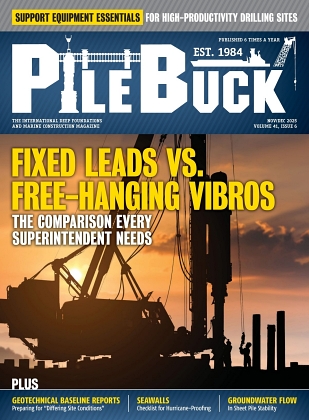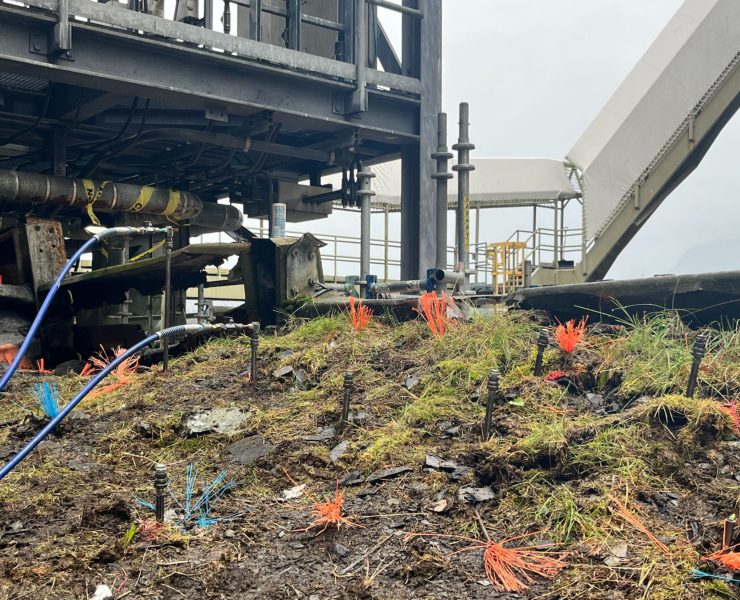Hill Expands Presence in Latin America with Port Terminal Project in Colombia

Latin America is emerging as a growth area for Hill specifically in the marine infrastructure development sector. While last summer saw the formal inauguration of the Panama Canal for its Third Set of Locks Project that has now opened up the floodgates for the latest generation of new Panamax vessels to cross over from the Atlantic to the Pacific Oceans, in March this year Hill officially completed its services for the first phase development of a port container terminal at Lazaro Cardenas, Mexico.
For expansion of the 102-year-old Panama Canal, Hill had provided construction risk services. And just recently, the company announced that its joint venture with the local Gomez Cajiao y Asociados has been awarded a contract to provide project management services for the COMPAS Terminal Expansion project in Cartagena, Colombia. The three-year contract is estimated to be worth $4.1 million, with Hill being a 40% JV partner.
The client is Compania de Puertos Asociados (COMPAS), a Bogota-based multiple-purpose terminal operator, in which the global leader APM Terminals bought 51% interest in 2015 as part of its plans to strike deeper roots into the growing Latin American marine transportation industry. Besides providing a shot in Hill’s growing reputation as a successful project and construction management construction company for development of greenfield or brownfield marine terminals, the Cartagena contract is also significant for another reason. “This is Hill’s first major assignment in Colombia and we are excited to be part of such an important initiative,” said Luis Lugo Jr., Hill’s Senior Vice President and Regional Manager (Southeast/Caribbean/Latin America). “The COMPAS terminal expansion will have a significant impact not just on Colombian trade, but on trade throughout South America.”
The current contract comes on the back of a strategic project management services that Hill provided for the Aguadulce Port Terminal in Buenaventura, Colombia for Sociedad Portuaria Industrial Aguadulce (SPIA) back in 2013. The service was primarily focused on cost, schedule, procurement and document control management during the pre-construction phase of the project.
Today, the Hill and Gomez Cajiao y Asociados joint venture has already started work on the project, said Jose Amarante, director of business development for Latin America with Hill International, noting the entire project team will consist of 23 professionals. The expanded terminal will have a maximum annual capacity of 600,000 TEU (containers) and 900,000 MT of general cargo, said Jose Amarante, Hill’s director of business development for Latin America.
The planned facility will also have a 550-meter quay capable of handling post-Panamax container vessels (capable of handling in excess of 5,000 TEUs) and a 220-meter quay for general cargo that can handle Panamax vessels. The dredged depth will be increased to 14.5 meters (47.6 feet) and new ship-to-shore cranes will be installed. An additional 46,700 square meters (502,675 square feet) will be added to the container yard and the terminal buildings will be relocated and expanded. The new terminal will be multipurpose and comply with APM Terminals requirements. The main port terminals in the region near the Panama Canal are being upgraded to be able to host the larger ships (neo-Panamax), which can now use the canal, Amarante said. Most of these terminals are not only used to take shipments to and from the country in question, but also play an important role in the sometime complex logistics of international cargo. “Hill’s scope of services includes project management, procurement management, design review, project controls, contract management, health and safety management and quality assurance/quality control,” Amarante said, adding the project is due for completion in late 2019.
The biggest challenge will be to execute the expansion and modernize the entire existing facility while the operation is on-going. “A highly-detailed schedule and synchronized logistics will be prepared by Hill’s scheduler and inter-phase manager to achieve this task and overcome the challenge,” he added. Given its proven expertise, Hill will implement its sophisticated and highly practical procedures to manage all the stakeholders and work to be executed during the design and construction phase of the project. The experience brought to this project from the APM Terminals contract for Lazaro Cardenas in Mexico will also prove to be glowing evidence of Hill’s value to the operator. Hill International’s project manager for the Lazaro Cardenas project will also be leading COMPAS, Amarante said.
In addition to finding a footing in Colombia, the award of the contract also has yet another relevance for Hill International – its past achievements of successfully delivering projects and winning the trust of the same client for new projects. The Cartagena project will be the third project to be awarded by APM Terminals, after it awarded Hill contracts for Lazaro Cardenas and the new trans-shipment terminal at Tangier in Morocco with an annual capacity of 5 million TEUs. APM Terminals is one of the world’s largest container terminal operating and management companies, with a comprehensive and geographically balanced global terminal network of over 200 integrated facilities in 58 countries and five continents. Royal Haskoning DHV of the Netherlands has been appointed as the design consultant to prepare the detailed design of expanded terminal and for its part Hill has started work with its team to ensure the project is completed successfully. “We have re-opened Hill International’s office in Bogota, although the project team is currently working at the joint venture partner’s office during the pre-construction phase, where the majority of the project team is located. However, as we get closer to the construction phase, the team will be based on site at the existing port in Cartagena,” Amarante said.
Marine industry in Latin America, Hill’s strategy
From a macro-economic perspective, an expansion of the Panama Canal has brought about many changes in the shipping industry, the Americas has been brought closer to Asia resulting in the shift of international trade routes and allowing ships to reach Asia from the US Gulf Coast more than two weeks faster than they would going east through the Suez Canal. Given its geographical location, Latin America will stand to gain in the years and Hill is positioning itself for emerging opportunities, Amarante said.
For Hill that has a wide portfolio of successfully providing project and construction management services for infrastructure projects in North America, Hill’s strategy for Latin America will include remaining focused on emerging opportunities, getting into JVs with local firms to gain the experience in each country and submit competitive bids. “With a population of 600 million, Latin America is a fertile area. Today in Brazil, we have 120 people in our offices, followed by 80 in Mexico and three in Colombia and our target will be for major growth,” Amarante said. With the government still being a prime source of project activity, bureaucracy plays a part and along with it the level of certification of experience required to bid. “We have a lot of work to do on that front and have started partnering with local firms,” he said. The benefits will be to know the local rules better, minimize risks that Hill has to assume as a PM/CM firm and draw on the benefits of better cost control. “As a PM our focus areas are cost control, contract administration and scheduling, while the local partner brings in costs that are cheaper,” Amarante noted. The first evidence of that is already in hand with the Cartagena contract.

















